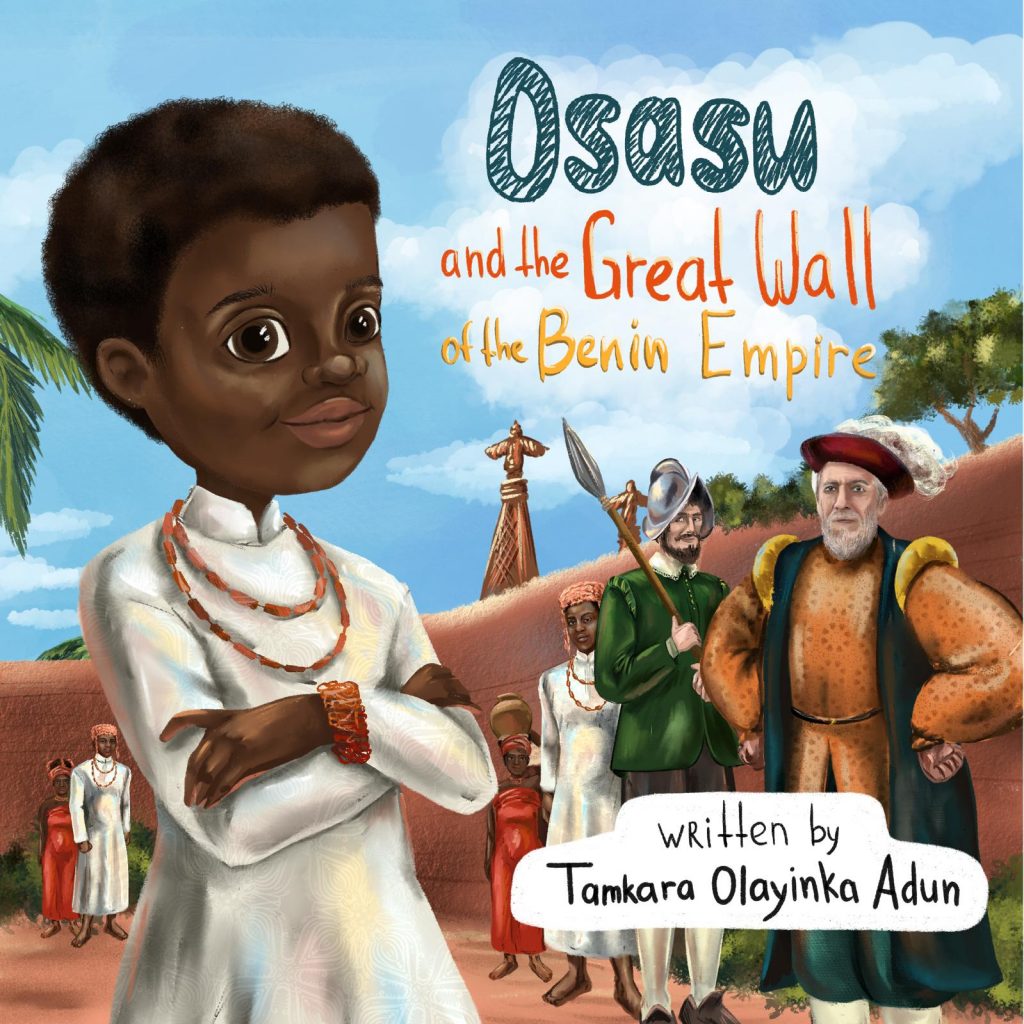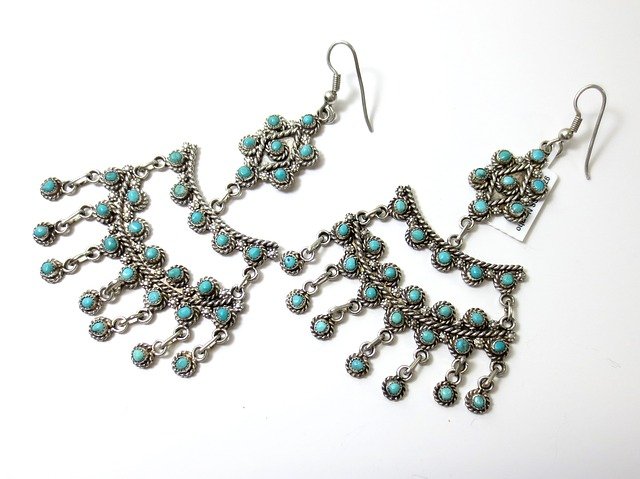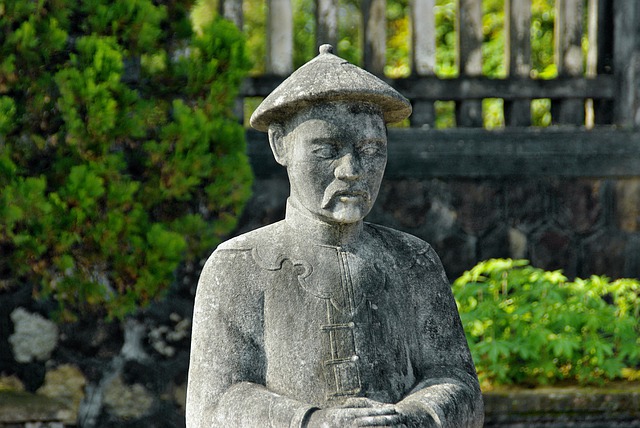Showcase: Perseverance + Heritage
Pass It On
This week, in my final Showcase, I explore writers who take me back to my favourite reading as a child, with what we would call ‘traditional storytelling’. My first stories were Anansi stories from my parents and relatives and this helped me embrace Ruth Manning Saunders as one of my favourite authors. These stories combined history with life lessons and, to this day, I continue to look for these in other people’s writing. With the advent of new technology, the children’s story landscape looks quite different these days. I imagine it takes courage to write against the grain of stories that dominate.
Lena Yang takes us back to the time of the great Emperors of China, reminding us of the wisdom of children; something we often overlook in a world that attributes knowledge to a structured, classical education.
The Mischievous Prince: Saving A Friend
Once upon a time, there lived a powerful emperor in China. He was strong and ruthless, and everyone was scared of him, except for his youngest son, who was bright and very mischievous. His name was Ming, which means ‘bright’ in Chinese.
Strange things happened when Ming was around. Food mysteriously went missing from the palace kitchen. A beautiful lady in a painting suddenly grew a moustache and a bird’s nest, complete with eggs, ended up in someone’s bed.
Ming was indeed mischievous. Deep down, though, he had a good heart. He was kind to all the servants and helped people when he could.
One day, Ming was walking around the palace looking for something fun to do. He spotted two servants hugging each other and crying.”What’s the matter?” he asked.
“It’s the saddle,” one of the servants said sadly, “the bugs have been at it and it is ruined.”
“The emperor will be very angry and execute us both,” the other servant said fearfully.
The emperor’s one and only hobby was horse riding. He gave his favourite horse the most exquisite saddle, made from silk. Unfortunately, it was the only silk saddle in the whole world.
“We should say farewell to all our friends and families and prepare for execution.” The servants were hopeless.
Ming stepped forward and held their hands. “Don’t worry, there is always a solution. Let me have a think.”
He sat under a tree with his legs crossed and eyes closed. After a little while, he took a deep breath and when he opened his eyes, they were filled with sparks.
He ran into his room and opened the door of a huge wardrobe, pulling something out from the top. It was a gown; a rather special gown, beautifully handmade from silk, it was one of a kind. It was also the very coronation gown that Ming was supposed to be wearing in three days’ time!
You won’t believe what Ming did next.
He took a pair of scissors and started cutting little holes in the special gown. While he was cutting, he was also counting: One, two three… cutting and counting, 30, 31, 32… still cutting and counting, and 86, 87, and 88.
“That’s enough holes and 88 for good luck,” Ming said brightly.
Number eight is a lucky number in China. It is thought to bring prosperity.
Ming put on the coronation gown and went to see his father. He tried his best to put on a very sad face.
“What’s the matter?” his parent asked. “Why do you look so sad?”
“Someone destroyed my coronation gown, and the coronation is in three days!” Ming cried out.
The emperor’s face dropped, making him look scary. “Who DID this?” he demanded.
All the servants were nervously shaking, heads down.
“I know who did this, and I’ve caught him already.” Ming’s righteous anger was all, of course, just a pretence. “Here he is; this is the criminal.” Ming held out a lidded ceramic pot.
Now the emperor looked puzzled, and the servants started murmuring amongst themselves.
The emperor took the pot and lifted the lid. With a flutter and a flicker, a tiny moth flew out.
“Catch it, catch it, catch the criminal!” Ming shouted. The servants started jumping, running, and flapping their hands in the air, trying to catch the tiny moth. They bumped into each other, tripping over flowerpots, making a huge mess in the palace. But still, the tiny moth flew away, leaving everyone hot, red-faced and confused.
The emperor sat on his throne, watching. Suddenly, he burst out laughing. He’d not laughed like this for a very long time. After a while, when he was able to talk, he said, “Ming, let it go, it’s just a tiny moth. We’ll make you another coronation gown.”
“But it’s not just the gown it destroyed,” Ming cried. “It also ruined your favourite saddle. Look!” He showed the saddle to the emperor.
The emperor looked at the saddle, then at the gown, seeming to understand something. “Well, I do have other saddles I can use.” He shrugged his shoulders, then gently put his hand on Ming’s shoulder, saying, “A good heart is worth more than any saddles and gowns combined.”
Ming had saved the two servants!
Before we end this story, if you are ever curious, this is what Ming’s name looks like in Chinese: 明. 日means the Sun, and 月 means the Moon.
(c) Lena Yang, 2021
 Lena shares her language and culture with us in her story, inspiring a familiarity we can augment with a visit to the British Museum, bringing us closer to understanding the context.
Lena shares her language and culture with us in her story, inspiring a familiarity we can augment with a visit to the British Museum, bringing us closer to understanding the context.
*****
Tamkara Olayinka Adun takes us back to the time of the great empires of Africa. However, many of those stories remain untold. Inspired by the need to preserve their heritage, she has dedicated this book to her children. “For my children Odunayo and Ifeoluwa, with love. You are my muses, my inspiration, and my motivation. This book is inspired by your history and the stories of your ancestors. Read it and remember it.”
stories remain untold. Inspired by the need to preserve their heritage, she has dedicated this book to her children. “For my children Odunayo and Ifeoluwa, with love. You are my muses, my inspiration, and my motivation. This book is inspired by your history and the stories of your ancestors. Read it and remember it.”
As part of a cohort of other contemporary African writers, Tamkara is continually striving to share these narratives with the world.
Osasu And The Great Wall Of The Benin Empire
Prologue:
A long, long time ago, there was a great empire nestled in the heart of West Africa. Known far and wide for its hardworking people, beautiful streets, and fantastic wealth, the Great Benin Empire was a peaceful kingdom where everyone looked out for one another and lived in peace and harmony. The Benin Empire was beautiful. Meticulously planned with long, straight roads, there were huge metal street lamps fuelled by palm oil that couldn’t be found anywhere else.
It was also very safe. There was no crime and the houses were built without locks on the doors. There simply wasn’t any need.
By the time of our story, the Benin Empire was ruled by the great Oba Ovonramwen Nogbaisi. His name meant, “The rising sun which spreads over All.” The obas (kings) lived in beautiful palaces decorated with shining brass. They were revered by the people, and in turn, committed to becoming strong leaders with the help of their elders, chief priests, and the wisdom of their ancestors.
The people who lived within the walls of the Benin Empire were known as the Edo people. They were hardworking and industrious people who worked as farmers, builders, musicians, traders, weavers, blacksmiths, magicians, fishermen, and storytellers, known as “griots”.
The griots were respected storytellers and guardians of their ancestors’ stories. Their job was to recount the tales of times past to ensure that the ancient stories would be passed on from one generation to another. Never to be forgotten.
The artisans created incredibly intricate artwork and beautifully detailed bronze carvings that could not be found anywhere else. Visitors to the Benin Empire always wished to take the marvelous masterpieces back home to show their countrymen overseas. Such was their beauty, detail, and rarity.
While the empire had a lot to be proud of, its most famous landmark was its great wall. This magnificent wall soared at sixty-six feet high and extended for over 9,900 miles. It was estimated at one time to be four times longer than the Great Wall of China! It took nearly 600 years for generations of Edo men and women to tirelessly construct the wall. Needless to say, the Edo were proud of their great wall and of their great empire.
But —while they lived in peace, love, and harmony—danger lurked beyond their walls.
Let me tell you about the Great Wall of the Benin Empire!
Chapter One: The Great Wall
The Great Wall of Benin was a marvel to behold and Osasu knew it.
Osasu was a jolly young boy.
Well, as jolly as any young boy around the world could be.
He loved to read and play his horn.
He also loved to play football with his friends and eat fufu and owo soup which was a staple meal in those parts.
As an Edo boy, his father taught him to honor and give thanks for the great wall built by their hard-working ancestors.
His father would often say to him:
“Osasu, our magnificent wall was built by our clever ancestors, thanks to their knowledge of science and architecture, and more importantly, their unity and dedication.”
He would go on to tell him of the millions of hours it took to build the wall and Osasu would listen with rapt attention, his heart bursting with pride for his ancestors and their work.
Every chance Osasu got, he would run his fingers along its rough, bumpy texture to feel its reassuring power.
He had great reason to be proud of their Great Wall and he enjoyed his life nestled within the safety of the Great Benin Empire with his father, mother, and little sister, Osareme.
(c) Tamkara Adun, 2021

When writers introduce new information to audiences through fiction, it’s often necessary to underpin this with other sources of information to help provide context. With this in find, Tamkara shares the following: “At one time, The Guinness Book Of World Records (1974) described the Great Wall in Benin as, The world’s largest earthwork carried out prior to the mechanical era.”
It was over 9,900 miles long: four times as long as the Great Wall Of China! It’s estimated this magnificent wall took 150 million hours of digging to construct, and consumed a hundred times more building materials than the Great Pyramid Of Giza—making it the world’s largest man-made structure at the time.
*****
Anna, our third writer in this showcase, shares a story of heritage and passing things on in a physical way, with a surprising twist.
A Pair Of Turquoise Earrings

“We need to go back!” Miranda shouted, as she rubbed her naked earlobe. “Dad, we need to go back.”
The flames were bursting from the front door and the windows, firemen crawling everywhere. They were directing the nozzles of their hoses onto the angry flames and spurting copious quantities of pressurised water into the heart of the inferno. Our house had morphed into a massive bonfire. We stood on the opposite pavement, watching the catastrophe develop, our possessions turning into cinders.
“We need to go back,” Miranda kept whining, nudging my arm and making me wonder how, at 16, she hadn’t figured out that, were she to take a few steps forward from where we stood, she, too, would have met the same fate as our possessions: a fluorescent ball, engulfed in heat and smoke.
I squeezed her hand.
“Let’s…” Miranda said again.
“No, sweetie. No! It’s too dangerous. Why would you want to go back into a burning house?”
“My turquoise earring. I lost it… I’m only wearing one.” She lifted her hair from the left side of her neck. “See? It’s gone.”
I shrugged my shoulders, as if to say, so what?
Miranda covered her face with her hands and wept. It was a convulsive cry, a pain that came from the depths of her heart. Cinders everywhere. My own sorrow surfaced, but I’m a man and well trained to maintain a stiff upper lip.
“Grandma gave me those turquoise earrings right before she died,” Miranda sobbed. “They were hers. They’re priceless. And now I’ve lost one.”
“We’ve lost so much more here, Miranda.”
“I know, Dad. This earring was more than a hundred years old. You don’t understand. I need to get it!”
Giving no further warning, she darted forward.
“Miranda!” I commanded. “Get back at once! There might be explosions. This is dangerous. Back! Do you hear me?”
It was in vain. Defying every warning, my teenage daughter was determined to find a silly earring in the burning debris. I bolted after her. Just as she was about to break through a circle of firemen, I grabbed the neckline of her shirt. Fearing she might pull another senseless trick, I held on tight, gently guiding her back to where we had been standing a few minutes earlier, observing our blazing house and crying over the devastation.
“You silly girl!” I yelled. Her pouting lip and teary eyes mellowed my anger. “Come here, baby, let me hold you.”
I freed my hand from her collar. A turquoise earring fell on the pavement. Bending over, I picked it up and handed it to Miranda. Her face lit up like the fire before us.
I exhaled in relief. “You silly girl, it had just slipped off into your collar.”
My daughter’s smile was worth the world to me.
As the blaze intensified, our entire material world disintegrated, but Grandma’s precious earring was, once again, dangling from my daughter’s ear.
(c) Anna Koenig, 2021
*****
In Anna’s story, Miranda’s grandmother has gifted something of herself to future generations through her granddaughter. Miranda, for her part, feels something of that transmission, compelling her to risk her life to retrieve what she believed was lost, inadvertently confirming how valuable our heritage remains to so many of us.
*****
Don’t forget issue 9 of Write On! magazine is out now! Read your copy here.
If you’d like to see your writing appear in the Write On! ‘Showcase’, please send your short stories, poetry or novel extracts to: pentoprint@lbbd.gov.uk.




